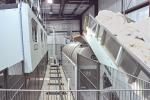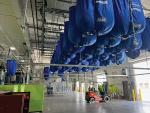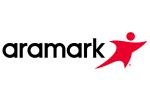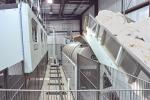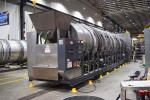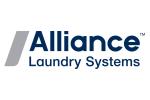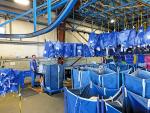CLAREMORE, Okla. — While we have always had fluctuating energy costs in our businesses, it seems lately there is a whole new level of price escalation.
No matter what we do to contain costs, the industrial and commercial laundry industry is seeing dramatic impacts on profitability like rarely before. Mark it up to general inflationary pressures, polar vortexes, aging infrastructure, increased governmental regulation or some other cause, it just seems to be getting out of control.
There are limited options to control per-unit costs—these are often regulated by local entities that control services like water and sewer, or perhaps markets where fuel oil and natural gas are impacted by weather events.
There are more options available to us to contain usage levels in our plants, and these can impact your P&L (profit and loss statement) positively. Let’s unpack some of these key areas where we can make a difference in the bottom line.
PER-UNIT COST CONTROL
Check with each utility supplier and assure your business is on the correct rate schedule. Getting on an alternate rate schedule can impact your per-unit cost in a big way.
Assure you are auditing your bills for each utility supplier each month and are checking their billed usage levels against your daily meter readings (more on that later). There is no substitute for understanding your billing and rates.
Consider utilizing the services of an energy management firm. They will usually offer services including bill auditing, payment processing and negotiation of new utility contracts that can help you keep costs in check.
They’ll also educate you on how the utility system works, and that is important to understand.
IN-HOUSE USAGE CONTROL
Use the usually complimentary services of your utility suppliers to audit your site and offer ideas to reduce energy consumption. Ask about rebates for work that you do based on their recommendations.
Turn the lights off! How often do you walk into your plant on a weekend, when it is quiet and no work is in play, and the night shift left on all the lights? Train your employees to keep the lights off when not needed and when they leave. Consider timers, motion detection actuation and LED lighting retrofits to help contain lighting costs.
As mentioned above, be sure your team is taking daily meter readings and doing the math to catch any spikes in usage. This may be particularly noticeable in water meter readings where it can give you early notice of a leak in the line or a leaking drain on a washer.
It gives you the data to assure that the utility billing office is charging you for the correct amounts used.
Are you reclaiming all the waste heat you can? Boiler stack economizers, wastewater heat reclaimers and make-up tank vent condensers can help reclaim heat. Make sure they are clean and working properly.
Water reuse systems come in handy when you have the space to place the tanks and pumps. Planning for these systems should include installing a split trench and washers that have two drains so you can direct the flow of potential re-use gallons. Treated water from your DAF (dissolved air floatation) may also be redirected to re-use.
Burners—keep your burners tuned and operating at optimum levels. This is generally an outsourced task with which your burner manufacturer or equipment suppliers can assist.
Keep your load sizes correct. If your team is underloading, then you’re processing more loads per week than necessary, thus using more of every category of utility and supplies. Proper loading can provide a significant boost in throughput volumes and reduce your operating costs immediately.
The Bottom Line: With the price escalations in utility costs looking like they’re here to stay, we must protect the P&L by managing usage, doing all we can to assure the per-unit costs remain reasonable and competitive.
This is not just a task for your maintenance team, so engage all your employees in the effort to contain utility costs.
Have a question or comment? E-mail our editor Matt Poe at [email protected].





















































